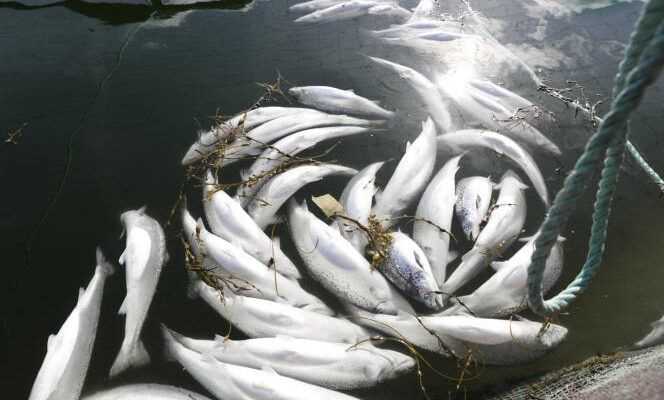ARTE – TUESDAY, NOVEMBER 9 AT 8.50 P.M. – DOCUMENTARY
This ode to Atlantic salmon won’t appeal to everyone. Vegetarians might be disappointed. The author, Albert Knechtel, certainly delivers a vibrant tribute to this muscular animal, capable of undertaking a long journey in the ocean, then of crossing multiple obstacles to go up the river where it was born. But the documentary maker never envisages sparing this valiant athlete a pathetic end, hanging on the line of a fisherman.
In Norway, there are still 530,000 wild salmon, while nearly 400 million are raised in cages floating in the fjords. Should we therefore bet on fish farming to preserve the animal, emblematic of the country? From this point of view, it is consumers who risk digesting the rosé pavé on their plate.
Because the conditions in which these animals grow up crammed in marine farms are far from serving the image of resplendent nature that Norway would like to promote. This is one of the worst factory farms, explains Ulrich Pulg of the Norce research institute in Bergen in substance: “Almost 20% of salmon die in their pens, which would be unacceptable in pig or cattle farms. “ In 2018, approximately 50 million salmon died from overpopulation and disease.
Always produce more
Between images of magnificent fjords and implacable figures, the documentary paints an uncompromising picture of Norway’s second economic sector, after oil. It gives the measure of this very “Good vein”, as the title says. At Oslo airport, not an international passenger flight takes off without a load of salmon in the holds, says the freight manager. He only wants one thing: the development and ever-greater industrialization of salmon farming in his country.
In January 2020, exports reached 88 million tonnes, 3% higher than 2019, for a value of 677 million euros, a jump of 21%. And the government is encouraging the movement, by massively granting new concessions on the coasts (more than 1,400 in 2019).
To produce more and more, Norwegian firms are spreading as far as the Pacific. The film provides a chilling overview of working conditions on the Chilean coast, where fifty deaths have been recorded among employees in seven years. The industry leaves behind serious marine pollution, while exporting almost all of its production, too expensive for local markets. “Norwegian companies here do everything that is forbidden to them in their country. They behave like colonists ”, accuses Juan Carlos Cardenas, a veterinarian who has been fighting for twenty years against the social consequences they impose.
In his last part, the author gets lost in unnecessary digressions. His words could easily do without the recipe for the escalope of salmon with sorrel from the prestigious restaurant Troisgros, in Roanne (Loire) – which has, moreover, crossed it off its menu – or the mention rather poorly explained. of an attempt to repopulate a tributary of the Rhine in Germany. However, the last images are worth it: they are shot in the pristine landscapes of Patagonia, on which salmon farming is eyeing.
Salmon, a good source, documentary by Albert Knechtel (All., 2020, 1 h 31).
